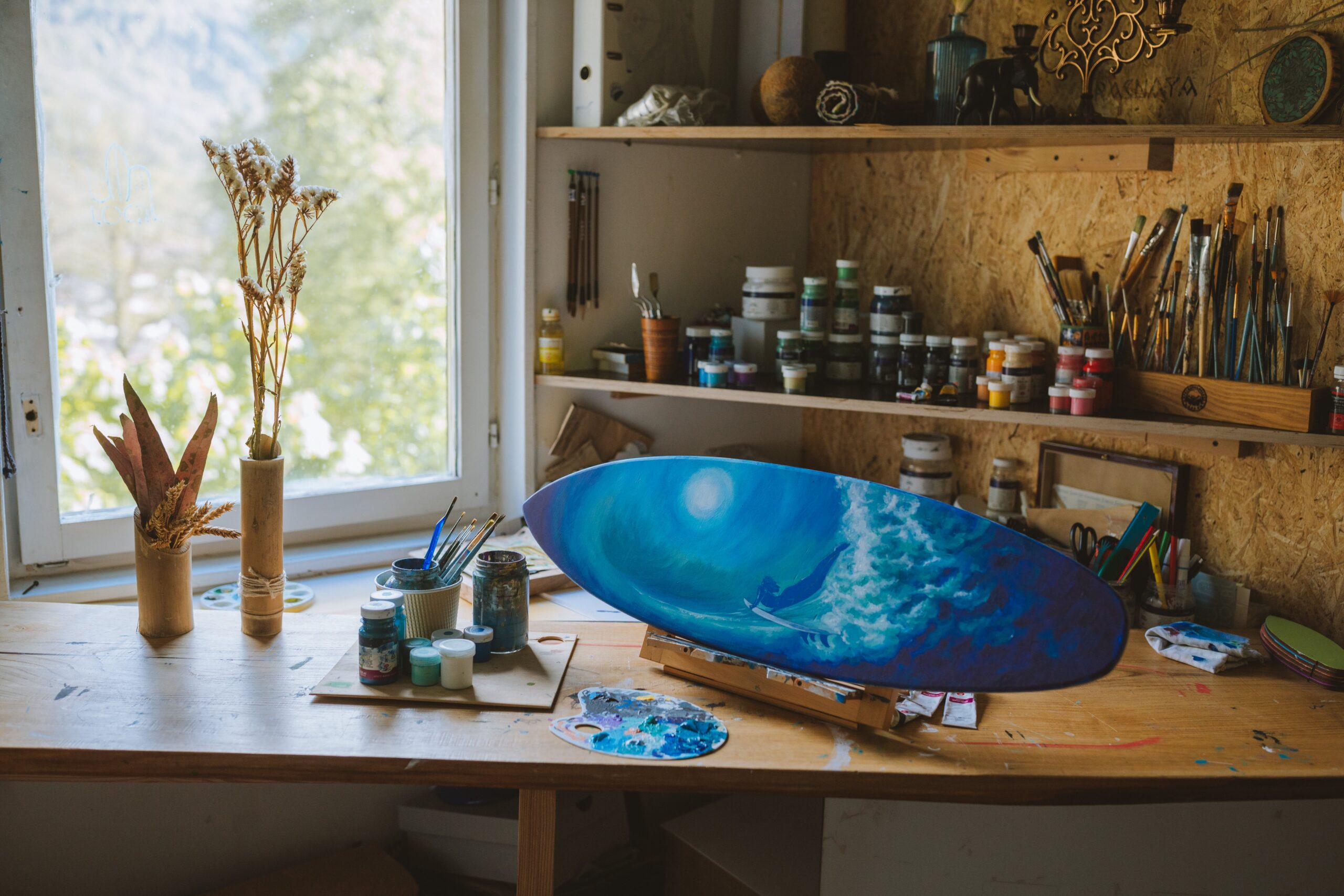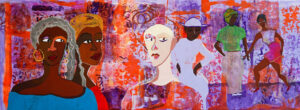Achieving beautiful washes and blends is a fundamental skill for artists working in various mediums, such as watercolor, acrylic, and even colored pencil. The ability to create smooth transitions of color and value can add depth, dimension, and a sense of realism to your artwork.
In this article, we will explore techniques and tips for achieving stunning washes and blends, helping you elevate the quality of your artwork and express your creativity effectively.
1. Select the Right Materials
Before diving into techniques, it’s essential to start with the right materials. The choice of paper, paint, and brushes can significantly impact the quality of your washes and blends.
- Paper
For watercolor, choose high-quality watercolor paper that is specifically designed to handle water-based mediums. Cold-pressed or hot-pressed papers offer different textures, so experiment to find the one that suits your style best.
- Paint
Invest in artist-grade paints for better pigmentation and color intensity. Cheap or student-grade paints may lack vibrancy and can be challenging to work with.
- Brushes
High-quality brushes are essential for achieving smooth washes and blends. A variety of brush shapes and sizes can be useful for different applications. Soft-bristle brushes are generally preferred for washes and blending.
2. Prepare Your Workspace
A clean and organized workspace is crucial for achieving beautiful washes and blends. Here are some workspace tips:
– Use a flat, sturdy surface, such as a drawing board or easel, to support your paper and prevent warping.
– Keep a clean container of water nearby for rinsing brushes and maintaining brush cleanliness.
– Have paper towels or a sponge handy for blotting and controlling the moisture on your paper.
– Organize your paints in a palette with separate wells for mixing colors as needed.
3. Wet-on-Wet Technique
The wet-on-wet technique involves applying paint to a wet surface, allowing colors to blend seamlessly. Here’s how to use this technique:
– Wet your paper evenly with a clean brush or a spray bottle filled with water. Avoid oversaturating the paper, as it can lead to excessive buckling.
– While the paper is still wet, apply your paint with a brush. The wet surface will encourage the colors to flow and mix softly.
– Experiment with layering different colors to create interesting blends and gradients.
4. Wet-on-Dry Technique
The wet-on-dry technique involves applying paint to a dry surface, allowing for more controlled blending and sharper edges. Here’s how to use this technique:
– Start with a dry surface (dry paper) and apply your initial layer of paint.
– While the paint is still wet but not overly diluted, use a clean brush or a damp brush to blend the edges of the paint. Work quickly to achieve smooth transitions.
– You can create gradients by gradually adding more water to your brush and blending the wet edge of the paint.
5. Layering
Layering is a versatile technique that allows you to build up colors and values gradually. It’s especially useful for achieving deep, rich colors and smooth transitions.
– Start with a light wash as your base layer. Allow it to dry completely.
– Apply subsequent layers of paint, allowing each layer to dry before adding the next. This approach lets you adjust values and intensify colors as needed.
– Experiment with layering complementary colors to create harmonious blends and contrasts.
6. Dry Brushing
Dry brushing is a technique where you use a brush with very little water to create textured and expressive marks. It’s often used for highlights, details, and adding visual interest to a piece.
– Load your brush with paint, ensuring it’s relatively dry.
– Apply the paint lightly and with minimal pressure to the paper’s surface. The texture of the paper will grab the paint, creating interesting textures.
– Dry brushing can add dimension to your artwork, particularly when highlighting areas with raised surfaces or texture.
7. Glazing
Glazing involves applying a translucent layer of paint over a dry base layer to alter the color, value, or mood of an area. It’s a valuable technique for fine-tuning your artwork.
– Start with a fully dry base layer of paint.
– Mix a small amount of paint with water or a glazing medium to create a transparent wash.
– Apply the glaze over the area you want to adjust, allowing the underlying color to show through.
– Experiment with different glazing colors to create subtle shifts in hue and tone.
8. Feathering and Dry Blending
Feathering and dry blending are techniques that use a dry brush to soften the edges of colors or to blend them together.
– Load your brush with paint and apply it to the paper.
– While the paint is still wet, use a dry brush to gently feather the edges or blend adjacent colors. This technique can be useful for creating soft transitions between colors.
9. Use Masking Fluid
Masking fluid is a handy tool for preserving areas of white paper in your artwork, especially in watercolor. Here’s how to use it:
– Apply masking fluid to the areas you want to protect. Allow it to dry completely.
– Paint over the masked areas with your desired colors and washes.
– Once the paint is dry, carefully peel off the masking fluid to reveal the untouched white areas.
Masking fluid allows for clean, sharp highlights and precise control over your washes and blends.
10. Practice Patience and Observation
Achieving beautiful washes and blends often requires patience and careful observation. Take your time to study your subject, analyze values, and understand how light and shadow interact. Continuously practice these techniques to refine your skills and develop an intuitive understanding of color and form.
Conclusion
Mastering the art of beautiful washes and blends is an essential skill for artists working in various mediums. Whether you’re painting with watercolors, acrylics, or exploring other techniques, the ability to create smooth transitions of color and value can enhance the realism and visual appeal of your artwork. By selecting the right materials, mastering different techniques, and practicing patience and observation, you can elevate your art to new levels and convey your creative vision effectively.



